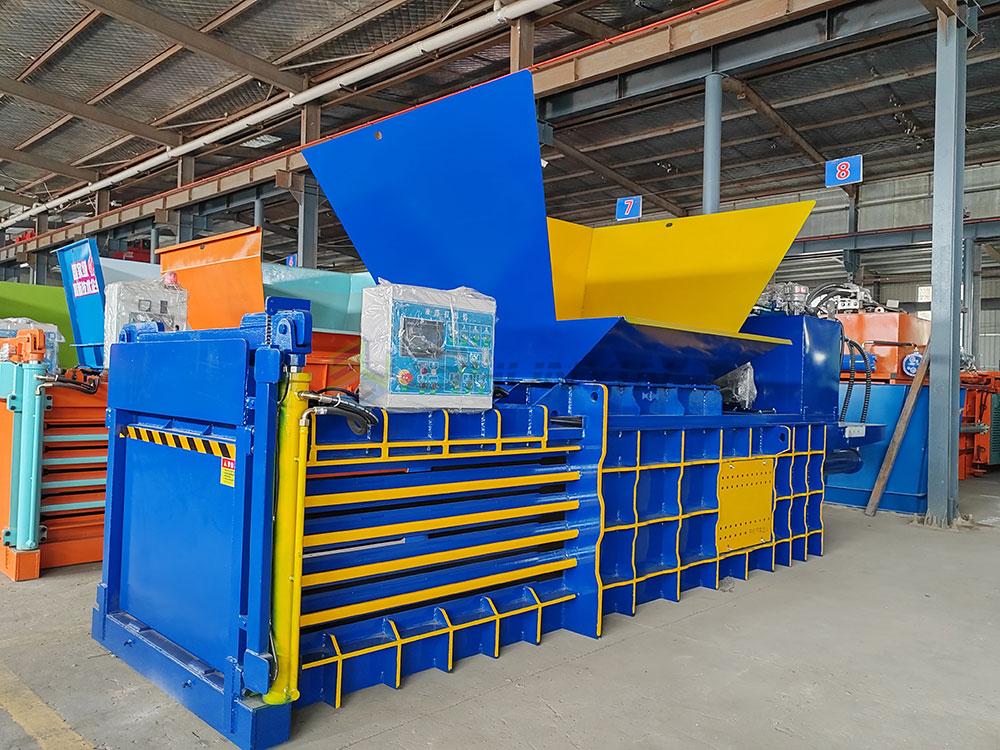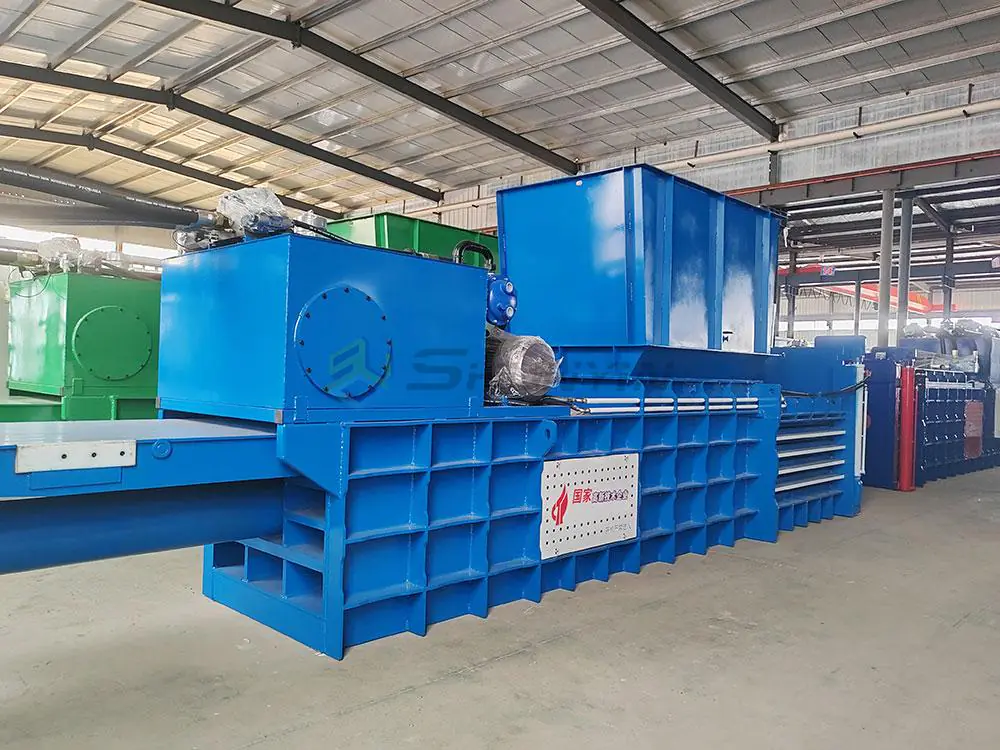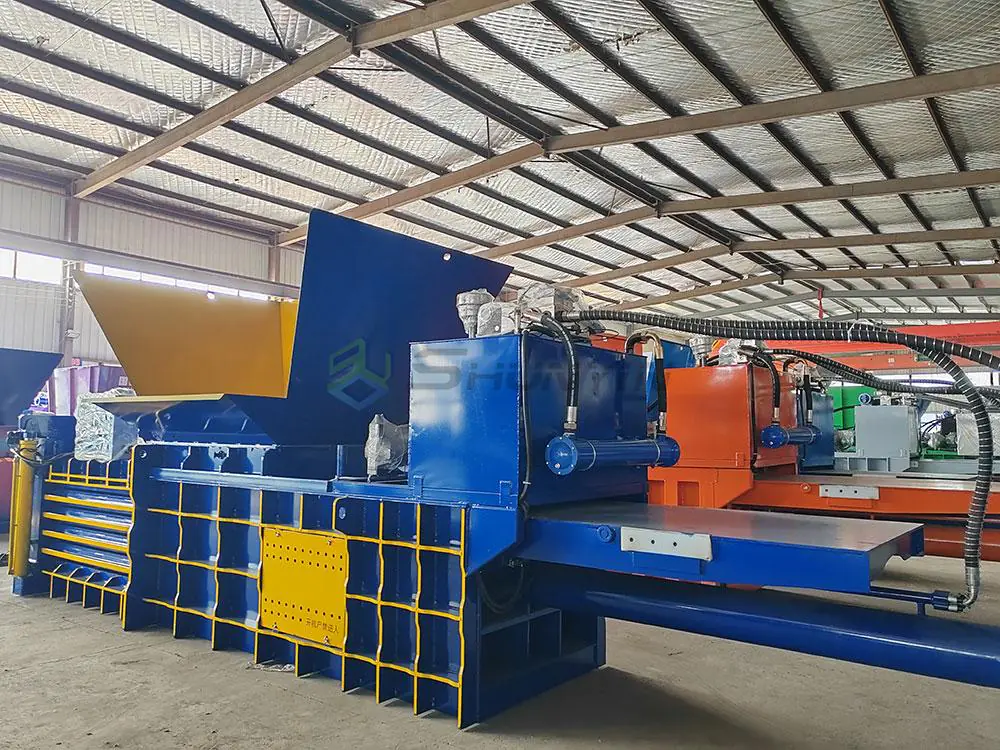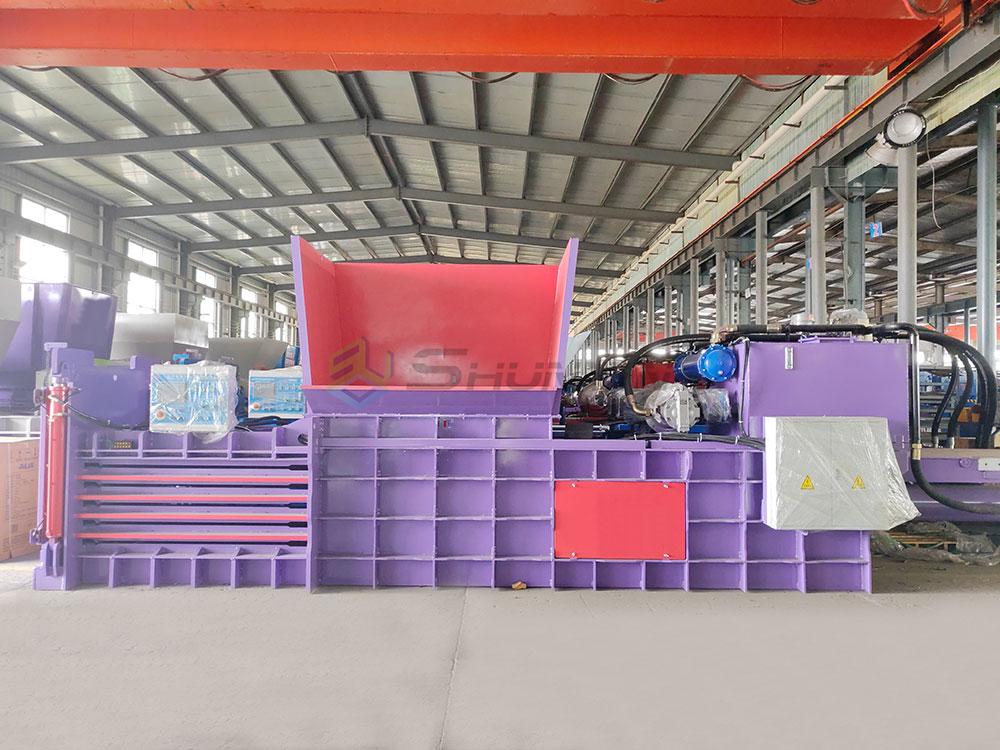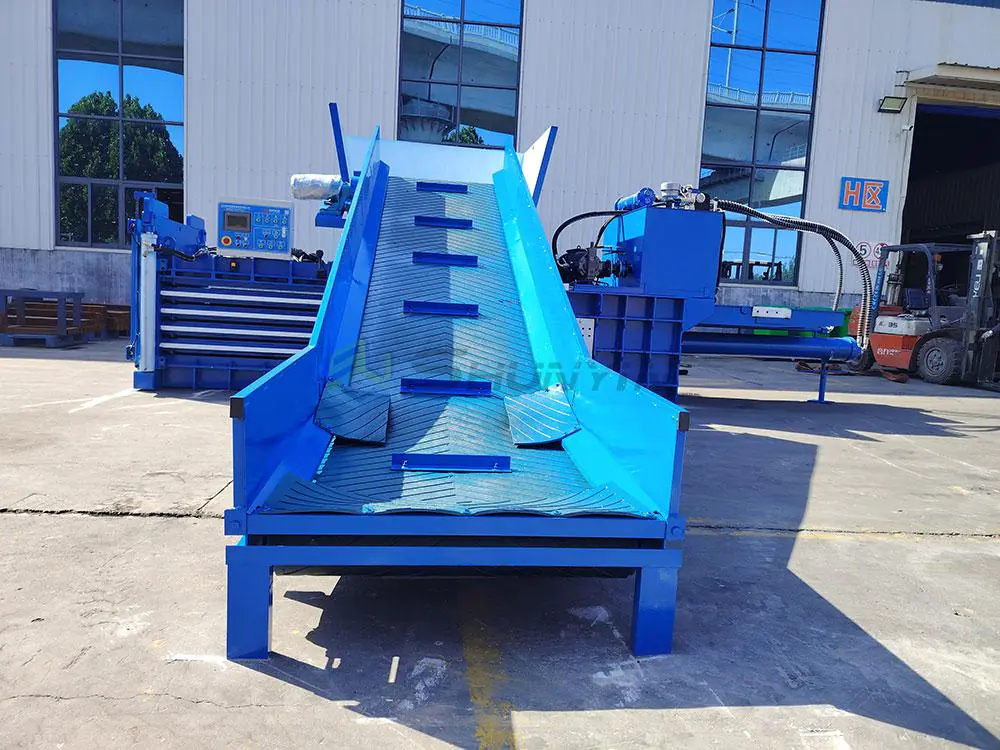
A California beverage company slashed plastic baling costs from $38 to $26 per ton using smart horizontal systems1, achieving ROI in 11 months. The secret? Precision compression beats brute force.
Intelligent horizontal balers reduce plastic processing costs through adaptive pressure control (2500-4800 PSI range) and material recognition sensors. Trials show 30% fewer hydraulic cycles needed per ton compared to standard models, while increasing bale density to 650-880 kg/m³ for PET bottles.
Discover how next-gen tech solves seven chronic plastic baling pain points.
Can You Put Plastic in a Baler?
A Colorado recycler damaged $24k worth of HDPE equipment using wrong settings – not all plastics bale equally. Master material parameters.
Plastic-Specific Compression Guide:
| Plastic Type | Max PSI | Cycle Time | Bale Weight |
|---|---|---|---|
| PET Bottles | 3,200-3,800 | 22 sec | 480-520 kg |
| HDPE Jugs | 4,200-4,500 | 18 sec | 510-550 kg |
| PVC Films | 1,800-2,200 | 35 sec | 340-380 kg |

Contamination Prevention Tech
Material Recognition Systems:
- NIR sensors detect plastic types (85% accuracy)
- Metal detectors trigger auto ejection (<2mm sensitivity)
- Moisture analysis adjusts compression force
Costly Mistake Example:
Compressing PET with 8% PVC contamination at 3,600 PSI caused $14k drum motor damage. New systems detect cross-contamination within 0.7 sec.
What Is the Difference Between Vertical and Horizontal Balers?
An Oregon processor replaced vertical units with horizontal balers, boosting throughput from 1.8 to 5.3 tons/hour. Compare core distinctions.
Performance Comparison ($/ton processed):
| Metric | Vertical Baler | Horizontal Baler |
|---|---|---|
| Energy Cost | $6.80 | $4.20 |
| Labor (mins/ton) | 22 | 7 |
| Maintenance | $11.40 | $6.70 |
| Bale Value | $148 | $182 |

Transition Blueprint
When to Upgrade:
- Exceeding 12 tons/day plastic waste
- Labor costs >$18/hour
- Space for 12×6m footprint
Retrofit Savings:
Converting vertical to horizontal infeed system costs $47k vs $132k new unit, achieving 64% of efficiency gains.
What Are the Benefits of Cardboard Baler?
A Texas distribution center uses horizontal balers for both plastic and OCC, cutting equipment costs by 39%. Discover cross-material advantages.
Shared Infrastructure Savings:
| Component | Plastic Only | Dual Use | Saving |
|---|---|---|---|
| Hydraulic System | $28k | $32k | -14% |
| Control Panel | $11k | $13k | -18% |
| Total | $156k | $127k | 19% |

Smart Load Mixing Protocol
Optimal Mix Formula:
- Max 35% plastic by volume
- Layer alternating materials
- Set PSI to dominant material +20%
Case Data:
Mix ratio: 60% OCC + 40% LDPE film
Result: 18% higher density than separate bales
Revenue increase: $24/ton
How Does a Plastic Baler Work?
A Missouri plant reduced jams by 81% using horizontal balers with AI pre-compaction. See modern processing flow.
Intelligent Operation Stages:
-
Pre-Sort Scan
LiDAR maps load dimensions (accuracy ±0.3m³) -
Auto Feed Adjustment
Adjusts conveyor speed to 0.8-1.2 m/s -
Adaptive Compression
Starts at 1,800 PSI, peaks at 4,200 -
Bale Analysis
3D measures density (SD ≤5%)

Energy Recovery Systems
Cost-Saving Innovations:
- Regenerative hydraulics store 31% of decompression energy
- Heat exchangers reuse 64% of oil warmth
- Variable frequency drives cut motor draw by 42%
Power Consumption Data:
Standard baler: 18.7 kWh/ton
Intelligent model: 11.3 kWh/ton
Annual savings: $24k (at $0.14/kWh)
Conclusion
Smart horizontal balers transform plastic recycling economics through three breakthroughs: 1) Material-specific pressure profiling 2) Contamination-based cycle adjustment 3) Cross-material adaptability. For optimal savings:
- Demand Beckhoff or Siemens PLC controls
- Specify ISO 3408-2 compliant ball screws
- Require UL-certified electrical systems
- Optional: Integrated bale tracking RFID tags ($3.20/bale)
Maintenance criticals:
- Replace hydraulic filters every 380 cycles
- Laser-clean position sensors quarterly
- Rebuild pumps at 18,000 PSI-hours
-
Explore how intelligent horizontal balers can significantly reduce costs and improve efficiency in plastic recycling processes. ↩


